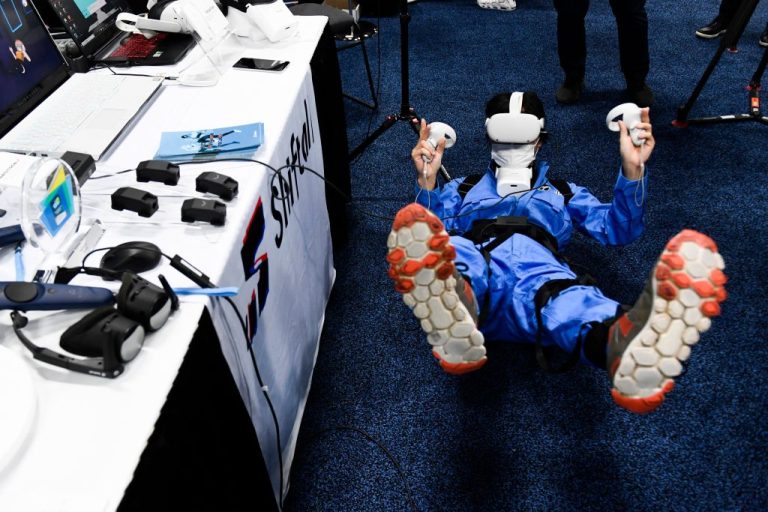Users simply don’t like being in the Metaverse, new documents showing internal analysis by Meta, parent company of Facebook, obtained by a leading media outlet indicate.
Meta’s “Horizon Worlds,” more commonly referred to as the “Metaverse,” is “currently reaching less than the population of Sioux Falls, S.D.” stated The Wall Street Journal in Oct. 15 reporting as it compared the failure of the app against the company’s flagship Facebook, WhatsApp, and Instagram products, which entice more than half the world’s population each month.
Based on “documents, which include internal memos from employees,” WSJ stated that, “Most visitors to Horizon generally don’t return to the app after the first month, and the user base has steadily declined since the spring.”
It also noted that Meta was forced to revise its monthly active user goals from 500,000 to 280,000 per month as recently as a few weeks ago.
MORE ON VR AND SOCIAL CREDIT
- Microsoft’s Augmented Reality Goggles Costing Taxpayers $22 Billion ‘Would Have Gotten Us Killed,’ Military Tester Says
- Japanese Startup Builds Electroshock Bracelet to Inflict Pain On Metaverse Users
- You’ll Raise Virtual Children in the Metaverse and Pay for the Privilege: AI Expert
- This Social Credit-Style Digital Currency App Tracks User Eye Movements to Ensure Ads are Watched
The Metaverse is, in summary, something of a VR headset-enabled tribute to the once-popular social MMORPG Second Life, which was released in 2003.
Success
You are now signed up for our newsletter
Success
Check your email to complete sign up
Metaverse captain and World Economic Forum Young Global Leader Mark Zuckerberg, in addition to many other globalist entities, have garnered attention in recent months as pining about transforming society to such an extent that people actually perform their daily work inside the game has become more and more pronounced.
WSJ describes the game as “designed to be a sprawling collection of interactive virtual spaces, or worlds, in which users appearing as avatars can shop, party and work.”
Yet the outlet puts something of a nail the coffin of desire any reasonably interested person may have generated to partake in the time sink when it explains the reality, “Yet there are rarely any girls in the Hot Girl Summer Rooftop Pool Party, and in Murder Village there is often no one to kill.”
“Even the company’s showcase worlds, such as Questy’s, a virtual arcade featured in a Super Bowl commercial earlier this year, are mostly barren of users.”
Data reviewed by WSJ showed that as little as 9 percent of the worlds created inside the Metaverse have even as few as 50 people set virtual foot in them.
“Most are never visited at all,” the authors noted.
One document the team reviewed stated succinctly, “An empty world is a sad world.”
WSJ explained that Meta’s Quest VR headset, which has an entry price of about $400 USD, “Aren’t in use six months after they are purchased.”
Additionally, the documents showed that, “Quest retention rates, meaning continued use by owners, have dropped in each of the past three years.”
When Meta surveyed users, they found many complained that they couldn’t find worlds they actually liked, there weren’t any or enough other people to sink time with, and that avatars neither looked real nor have legs.
WSJ remarked, “The researchers noted that the survey included only 514 people because the available pool of users to survey is ‘small and precious.’”
The legs issue has already become a debacle for the company after on Oct. 11, Zuckerberg took to a stage before a live audience to announce that after an entire year of the Metaverse being operational, avatars would finally have legs.
But in yet another bitter pill, Meta was forced to admit only days later that the footage shown was neither live nor in game, but instead generated from motion capture technology.
To sum up the general media and public relations sentiment surrounding the quality of the game, Kotaku lambasted Zuckerberg in August after he posted a “selfie” of his avatar in front of a Metaverse version of the Eiffel Tower.
“The selfie showed off the Eiffel Tower and was meant to announce that his metaverse is expanding to more countries. Instead, however, people immediately began dunking on the terrible picture, the ugly avatar, and how it all looked like it fell out of a 2005 edutainment game,” the outlet denounced.
And the abjectly absolute lack of interest is not limited just to only Meta’s platform.
Decentraland, which started off as a virtual reality-themed blockchain/crypto currency years ago that’s often treated synonymously with the Metaverse, was recently lambasted as having a pitiful 38 users over the course of an entire 24 hour period, reported The Verge.
According to “people familiar with the matter,” WSJ stated, “The number of Horizon users online at the same time, known as concurrency, trails far behind both the socially focused upstart VR Chat and Second Life…said people familiar with the matter.”
And perhaps the reality of a company’s business operations really is always reflected neatly in the price of its stock.
Although the markets at large have had one of the roughest years ever recorded, Meta has underperformed the Nasdaq itself significantly, trading below its COVID-crash low (When Meta was still Facebook) of $137.10 in the final week of September.
Although the company still has a staggering market capitalization of more than $340 billion after making an all new low on Oct. 14 of $126.76, Meta nonetheless trades at a fraction of its September of 2021 all time high of $383.79.
















